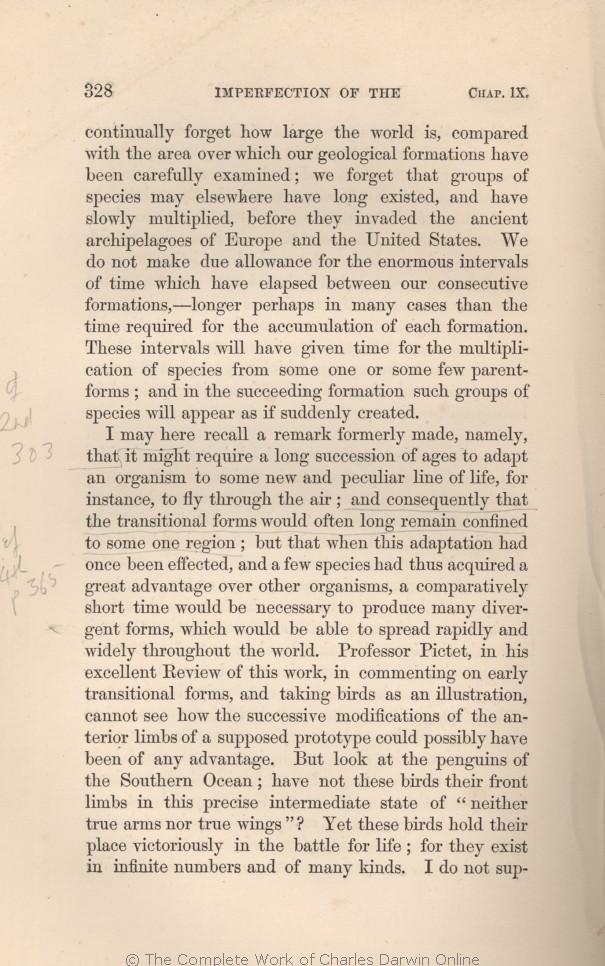continually forget how large the world is, compared with the area over which our geological formations have been carefully examined; we forget that groups of species may elsewhere have long
existed, | existed, 1861 1866 1869 1872 | | existed 1859 1860 |
| multiplied, 1861 1866 1869 1872 | | multiplied 1859 1860 |
| ..... 1861 1866 1869 1872 | | of 1859 1860 |
| enormous 1859 1860 1861 1866 1869 | enormous 1872 |
| time 1861 1866 1869 1872 | | time, 1859 1860 |
| ..... 1861 1866 1869 1872 | | probably 1859 1860 |
| many 1861 1866 1869 1872 | | some 1859 | | most 1860 |
| or some few 1859 1860 1861 1866 1869 |
| OMIT 1872 |
| parent-forms; 1859 1860 1861 1866 1869 | | parent-form: 1872 |
| formation 1859 1860 1861 1866 1869 | | formation, 1872 |
| groups of species 1861 1866 1869 |
| species 1859 1860 |
| groups or species 1872 |
|
|
I may here recall a remark formerly made,
namely, | namely, 1861 1866 1869 1872 | | namely 1859 1860 |
| instance, 1861 1866 1869 1872 | | instance 1859 1860 |
| and consequently that the transitional forms would often long remain confined to some one region; but 1861 1866 1869 1872 |
| but 1859 1860 |
| that 1859 1860 1861 | | that, 1866 1869 1872 |
| adaptation had once 1861 1866 1869 1872 |
| had 1859 1860 |
| be able to 1859 1860 1861 1866 |
| OMIT 1869 1872 |
| "neither 1861 | | "neither 1866 1869 1872 |
| wings"? 1861 | | wings"? 1866 1869 1872 |
| sup- pose 1861 | | suppose 1866 1869 1872 |
|









